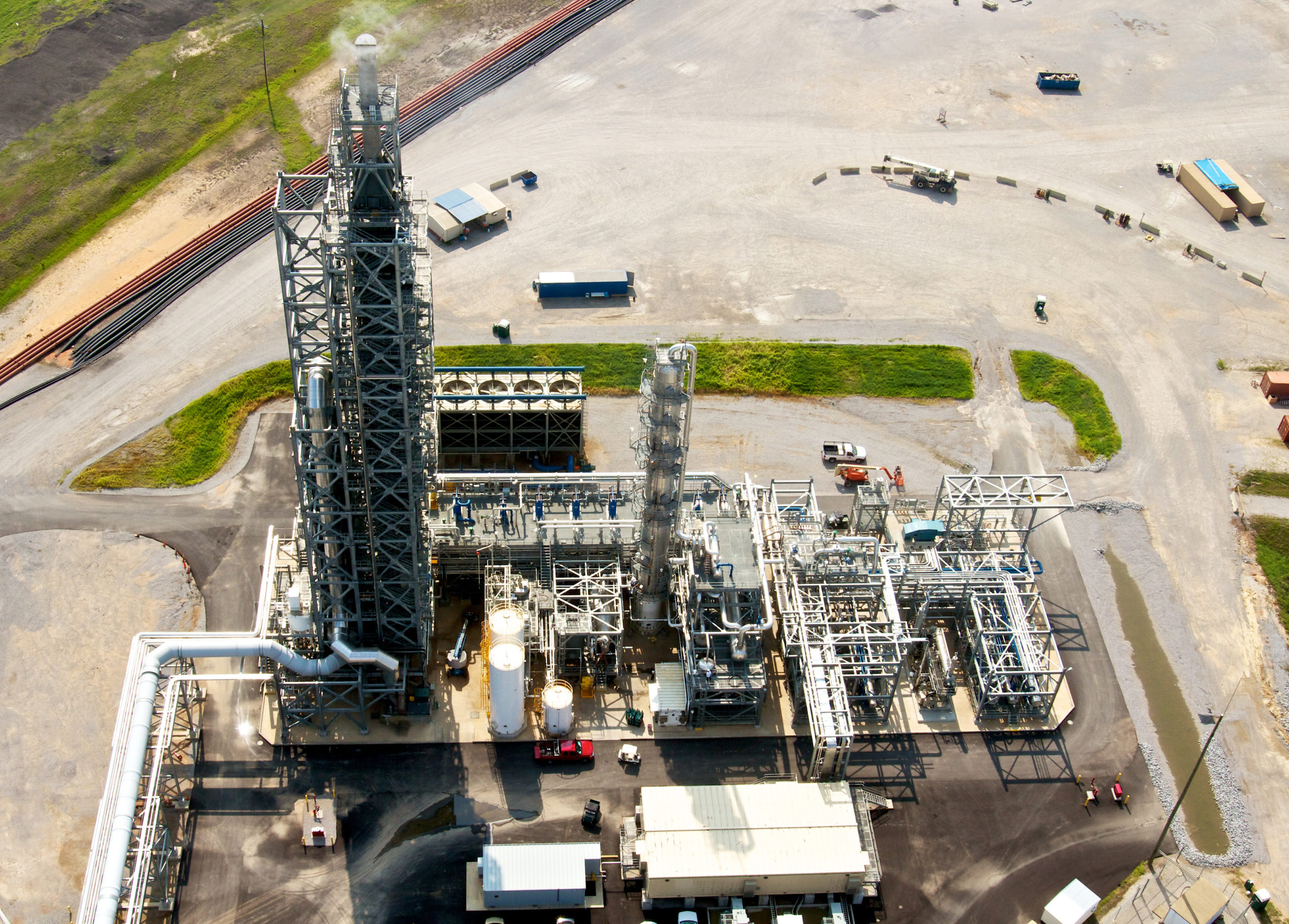Can Carbon Capture Make Coal Competitive with Natural Gas?

The Answer May Be ‘Yes’ in Some Cases, According to Retrofit Case Study in Alabama
Retrofitting some existing coal plants with partial post-combustion carbon capture may be competitive with newly constructed natural-gas–combined-cycle plants with respect to CO2 emissions and economics. This insight comes from an EPRI analysis of a partial capture retrofit of the 773-megawatt coal-fired Plant Barry Unit 5 operated by Southern Company subsidiary Alabama Power.
The capture system used an amine-based solvent to absorb 45% of the CO2 from the plant’s flue gas, reducing total plant emissions to about 830 pounds per megawatt-hour. This is comparable to an average natural-gas–combined-cycle plant in the U.S. and well below the 1,400 pounds per megawatt-hour limit proposed by the U.S. Environmental Protection Agency for new coal plants.
To minimize the energy penalty, steam from the coal plant was used to regenerate the solvent, and heat from the carbon capture facility was used for feedwater heating.
This is the sixth in a series of EPRI carbon capture retrofit studies at operating coal plants across North America. For all retrofits, initial plant efficiency, air quality control equipment, availability of space for capture equipment, and other factors impacted the plant’s levelized cost of electricity.*
*“A Summary of EPRI’s Engineering and Economic Studies of Post Combustion Capture Retrofit Applied at Various North American Host Sites” from the Proceedings of the 11th Greenhouse Gas Control Technologies Conference.
Photo of Plant Barry carbon capture unit courtesy of Southern Company.

